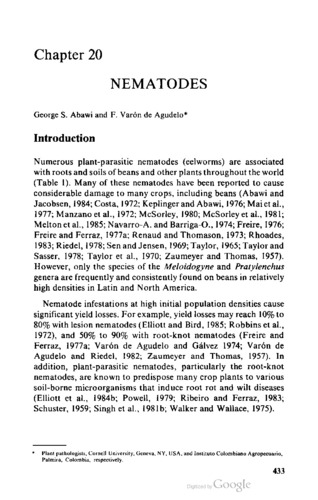Nematodes
A fist of nematodes associated with the roots of beans and other plants is given in table form, the species of Meloidogyne and Pratylenchus being the most common in bean crops in the Americas. Meloidogyne species are prevalent in light sandy soils with good drainage. Length of survival in the soil depends on the nematode species, stage of development of the pathogen, soil type, moisture, and aeration. Color illustrations are given of the symptoms and damage caused by nematode feeding on root systems. They often appear on aerial plant parts which become chlorotic, stunted, burned at the leaf edges, and finally wilt. Crop rotation, deep plowing, the use of fallow, weed control, and flooding for 1-2 wk reduce nematode populations. Chemical control is effective but expensive and requires special equipment for soil applications. Control by plant resistance is the most efficient strategy. (CIAT)

